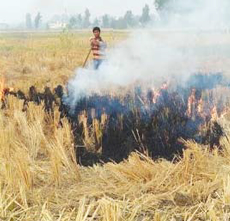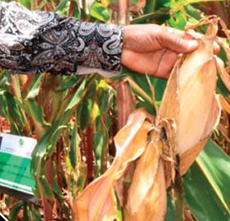Fighting the Swarm: An Interview with Dr. Roger Price on Protecting Agriculture from Desert Locusts
 There is no debate that the desert locust is one of the most destructive migratory pests in the world. Swarms of desert locusts are so massive that they are measured in kilometers, and a single locust can eat its weight in food in a day. This, coupled with locusts’ exponential breeding rates, can lead to unmatched loss of crops and farmland across entire countries, devasting the local communities and threatening food security across the planet.
There is no debate that the desert locust is one of the most destructive migratory pests in the world. Swarms of desert locusts are so massive that they are measured in kilometers, and a single locust can eat its weight in food in a day. This, coupled with locusts’ exponential breeding rates, can lead to unmatched loss of crops and farmland across entire countries, devasting the local communities and threatening food security across the planet.
As of June 2020, much of East Africa was facing a desert locust crisis. The situation is particularly acute in Kenya, Somalia and Ethiopia. To understand the global implications of locust swarms on food security, CropLife International spoke with Dr. Roger Price of the Plant Protection Research Institute in Pretoria, South Africa.
CropLife: Thank you for agreeing to be interviewed, Dr. Price. Can you please tell us what makes locusts so damaging to agriculture and food security?
Dr. Price: It’s the sheer number of insects per swarm, the sheer weight of food that swarms can eat a day, and the unpredictability of their paths—they rise very quickly and in great numbers.
 The problem? Burning crop residues. Although it causes a variety of health issues and significantly raises levels of pollution, it is a common practice in India and many other countries around the world. The solution? Turn the crop residues into something useful, such as bioenergy.
The problem? Burning crop residues. Although it causes a variety of health issues and significantly raises levels of pollution, it is a common practice in India and many other countries around the world. The solution? Turn the crop residues into something useful, such as bioenergy. Kenyan farmers, impressed by the high yields realized in GMO open field trials, are urging the government to speed up the process of allowing them to access Bt maize.
Kenyan farmers, impressed by the high yields realized in GMO open field trials, are urging the government to speed up the process of allowing them to access Bt maize. Economist Dr. Rabah Arezki says African leaders need to come up with ideas that will make the continent’s economy better than it was before the coronavirus pandemic hit.
Economist Dr. Rabah Arezki says African leaders need to come up with ideas that will make the continent’s economy better than it was before the coronavirus pandemic hit. As Purity Njeru walks through one of her farm in Tharaka South Sub County, Tunyai Location, Tharaka Nithi County, she points to the bounty of growing sorghum.
As Purity Njeru walks through one of her farm in Tharaka South Sub County, Tunyai Location, Tharaka Nithi County, she points to the bounty of growing sorghum.